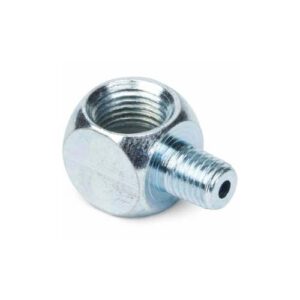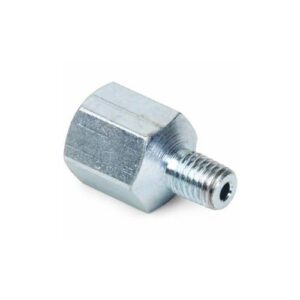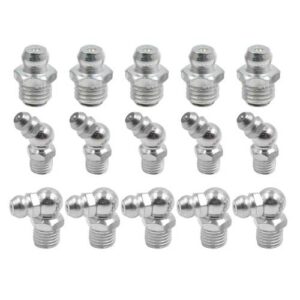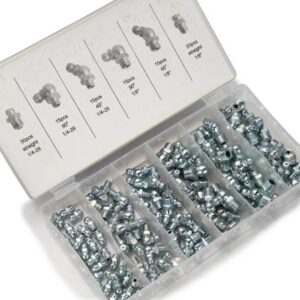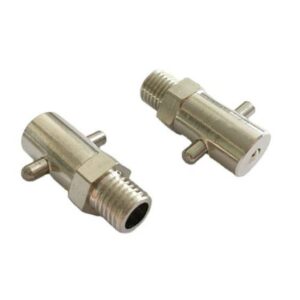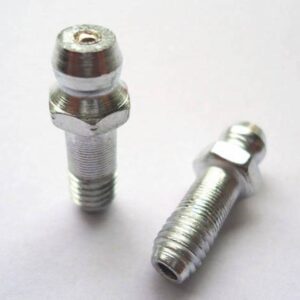Grease Fitting Optimal Machinery Performance
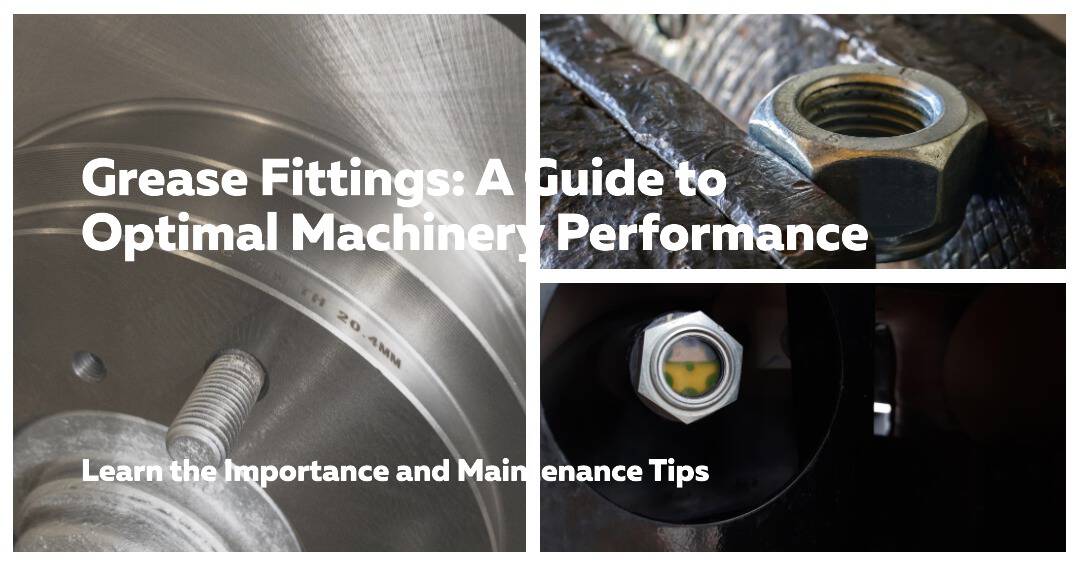
Contents
Introduction
In the world of machinery, the longevity and efficiency of your equipment hinge significantly on regular and precise maintenance. One crucial component that often goes unnoticed is the grease fitting, or zerk fitting. These small yet essential devices play a pivotal role in ensuring that your machinery operates smoothly, reducing wear and tear and extending its lifespan. In this comprehensive guide, we will unravel the mysteries surrounding grease fittings, delve into their importance, and provide actionable insights on their maintenance for optimal machinery performance.
Understanding Grease Fittings
A. Definition and Types
Grease fittings, commonly known as zerk fittings, are small devices engineered to deliver lubrication to mechanical parts that are otherwise inaccessible. They come in various types, including hydraulic, button head, and flush type, each designed for specific applications and machinery configurations.
B. How Grease Fittings Work
These fittings serve as entry points where lubricant is injected under pressure into the machine parts. The pressure forces the lubricant into areas of friction, reducing wear and enhancing smooth operation. A ball check valve prevents contaminants from entering and ensures that the lubricant is evenly distributed.
C. Role in Different Machinery
From automotive to industrial applications, grease fittings are ubiquitous. They are integral in maintaining equipment like ball bearings, joints, and linkages, ensuring that these components remain well-lubricated and operational, thereby minimizing downtime and repair costs.

Importance of Proper Lubrication
A. Effects of Lubrication on Machinery Performance
Lubrication is the lifeblood of machinery. Properly lubricated machinery reduces friction between moving parts, leading to decreased wear, lower operating temperatures, and enhanced efficiency. It also acts as a barrier, preventing the ingress of contaminants and corrosion.
B. Common Issues from Inadequate Lubrication
Inadequate lubrication can lead to increased friction, wear, and heat generation. This not only reduces the efficiency of machinery but can also lead to premature failures, increased energy consumption, and elevated maintenance costs.
C. Case Studies
We’ll explore real-life scenarios where effective lubrication has proven to enhance machinery lifespan and efficiency. Conversely, we’ll examine instances where the lack of proper lubrication led to operational failures, underscoring the critical role of regular and precise lubrication.
Step-by-Step Guide to Maintaining Grease Fittings
A. Tools Needed for Maintenance
Equipping yourself with the right tools is the first step to efficient maintenance. Necessary items include grease guns, lubricants, cleaning agents, and safety gear. Each tool plays a pivotal role in ensuring that the lubrication process is efficient, safe, and effective.
B. Safety Precautions to Consider
Safety is paramount. Always ensure the machinery is turned off before starting the maintenance process. Use safety gear like gloves and goggles to protect yourself from grease splatters and other hazards. Always follow the manufacturer’s guidelines to ensure safety and effectiveness in maintenance.
C. Detailed Steps on Cleaning, Lubricating, and Maintaining Grease Fittings
- Cleaning: Begin by cleaning the grease fittings to remove dirt and debris. This ensures that contaminants don’t enter the machinery during lubrication.
- Lubricating: Use a grease gun to apply lubricant through the grease fittings. Ensure the right type and amount of lubricant is used.
- Maintenance Checks: Regularly inspect the grease fittings for damage or clogs and replace them as needed. Ensure they are securely fastened and free of leaks.
D. Troubleshooting Common Problems
Address common issues like clogged fittings and leaking lubricants. Learn how to unclog fittings and ensure that the lubricant is adequately sealed to prevent leaks and contamination.
Advanced Tips and Tricks
A. Innovative Methods and Tools for Efficient Maintenance
Explore advanced techniques and innovative tools that enhance the efficiency of the maintenance process. Learn about automated lubrication systems and other technologies that minimize manual intervention and ensure precision.
B. Customizing Maintenance Schedules Based on Machinery Type and Usage
Understand the importance of tailoring maintenance schedules to fit the specific needs of different machinery. Factors like operational intensity, environmental conditions, and machinery type play a crucial role in determining the frequency and type of maintenance required.
C. Utilizing Technology to Monitor and Manage Maintenance
Delve into the world of technology that aids in maintenance. Explore software and applications that help in scheduling, monitoring, and managing maintenance tasks efficiently, ensuring that no crucial maintenance activity is overlooked.
The Impact of Regular Maintenance on Machinery Performance
A. Analysis of the Long-term Benefits of Regular Maintenance
Explore the tangible and intangible benefits of regular maintenance. From enhanced machinery efficiency and lifespan to reduced operational costs and downtime, regular maintenance is the cornerstone of optimal machinery performance.
B. Real-life Examples of Improved Performance and Reduced Repair Costs
Through case studies, illustrate the direct correlation between regular maintenance and improved performance. Highlight instances where maintenance led to significant cost savings and efficiency improvements.
C. Predictions and Trends in Machinery Maintenance
Look ahead into the future of machinery maintenance. Explore emerging trends, technologies, and practices that are set to redefine maintenance, making it more efficient, cost-effective, and impactful.
In conclusion
Mastering the maintenance of grease fittings is essential for optimizing machinery performance and longevity. By implementing regular and precise care practices, and leveraging advanced tools and technologies, operators can ensure reduced operational costs and enhanced efficiency. This guide serves as a comprehensive resource, offering insights and actionable steps to elevate your maintenance practices and machinery performance.-
Fittings for Grease Fittings–Elbow Adapters
$0.50Original price was: $0.50.$0.43Current price is: $0.43. Add to cart -
Fittings for Grease Fittings–Straight Adapters
$0.40Original price was: $0.40.$0.30Current price is: $0.30. Add to cart -
Long Straight Grease Nipple
$0.45Original price was: $0.45.$0.04Current price is: $0.04. Add to cart
Frequently Asked Questions
- What is a grease fitting?
- A grease fitting is a small component used in mechanical systems to facilitate the application of lubrication. It ensures that moving parts operate smoothly, reducing friction and wear.
- How often should I maintain my grease fittings?
- The maintenance frequency depends on the type of machinery and its usage. It's essential to regularly check and clean the fittings and apply the appropriate lubricant to ensure optimal performance.
- What tools are needed for grease fitting maintenance?
- Essential tools include grease guns, lubricants, cleaning agents, and safety gear. Each tool plays a crucial role in ensuring an efficient, safe, and effective lubrication process.
- Can I use any type of lubricant for my grease fittings?
- No, it's crucial to use the appropriate lubricant specified for your particular machinery and grease fittings. Always refer to the manufacturer's guidelines to select the right lubricant.
- How do I know if my grease fittings are malfunctioning?
- Signs of malfunctioning grease fittings include excessive friction, overheating, unusual noises, and decreased machinery performance. Regular inspections can help identify and address issues early.
- Are there automated solutions for grease fitting maintenance?
- Yes, there are automated lubrication systems that minimize manual intervention, ensuring precision and efficiency in applying lubricants to various parts of the machinery.



